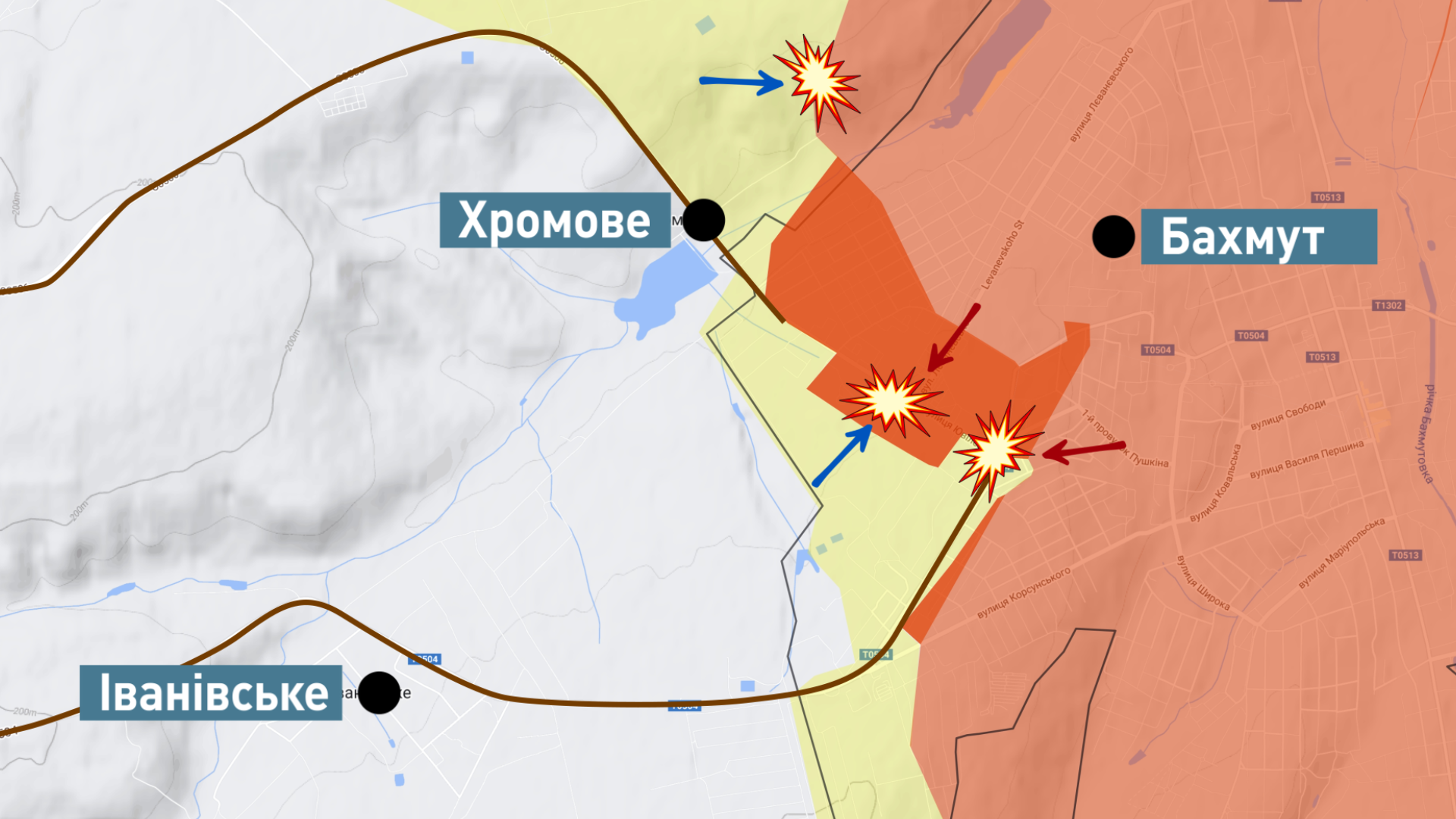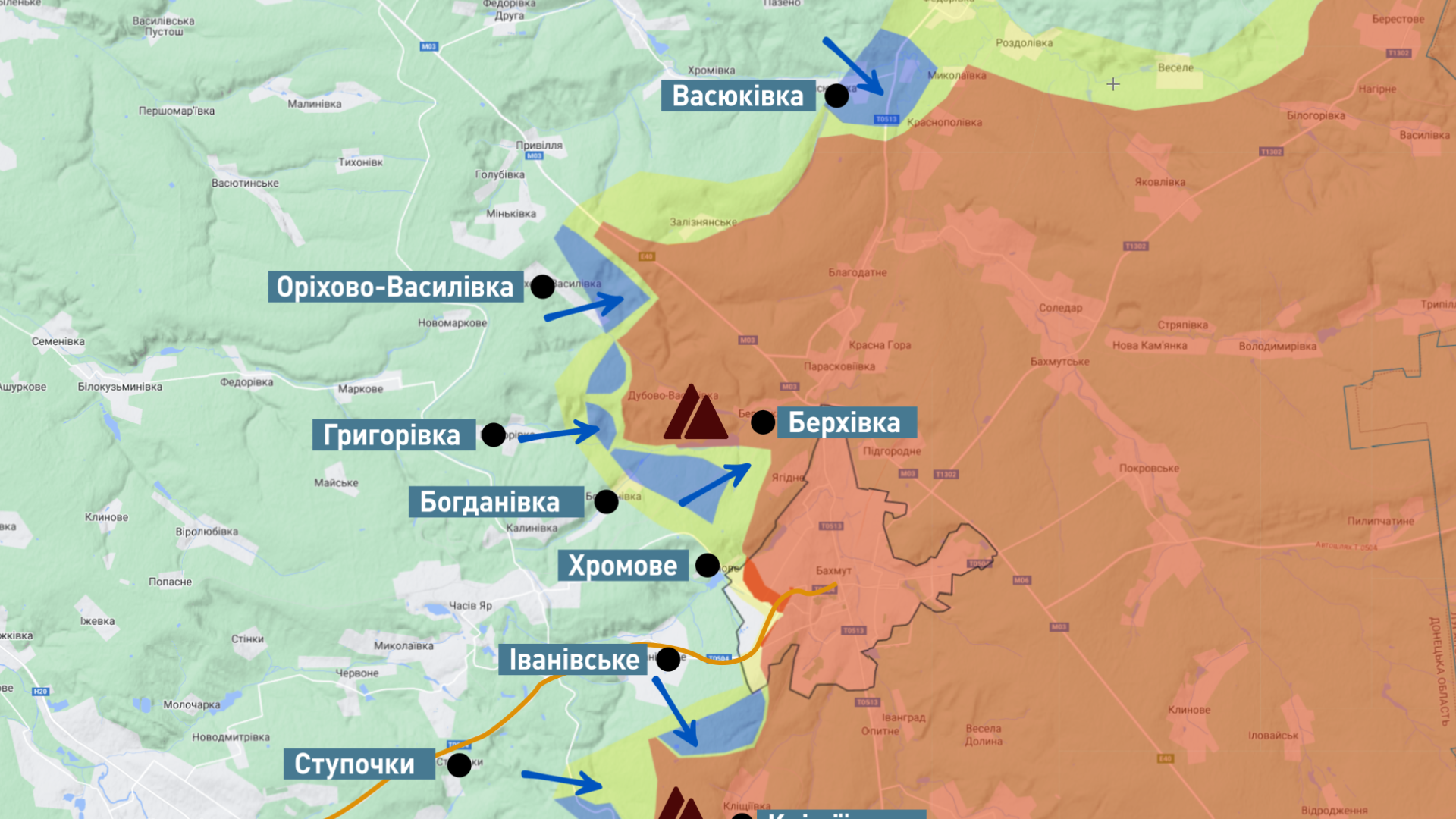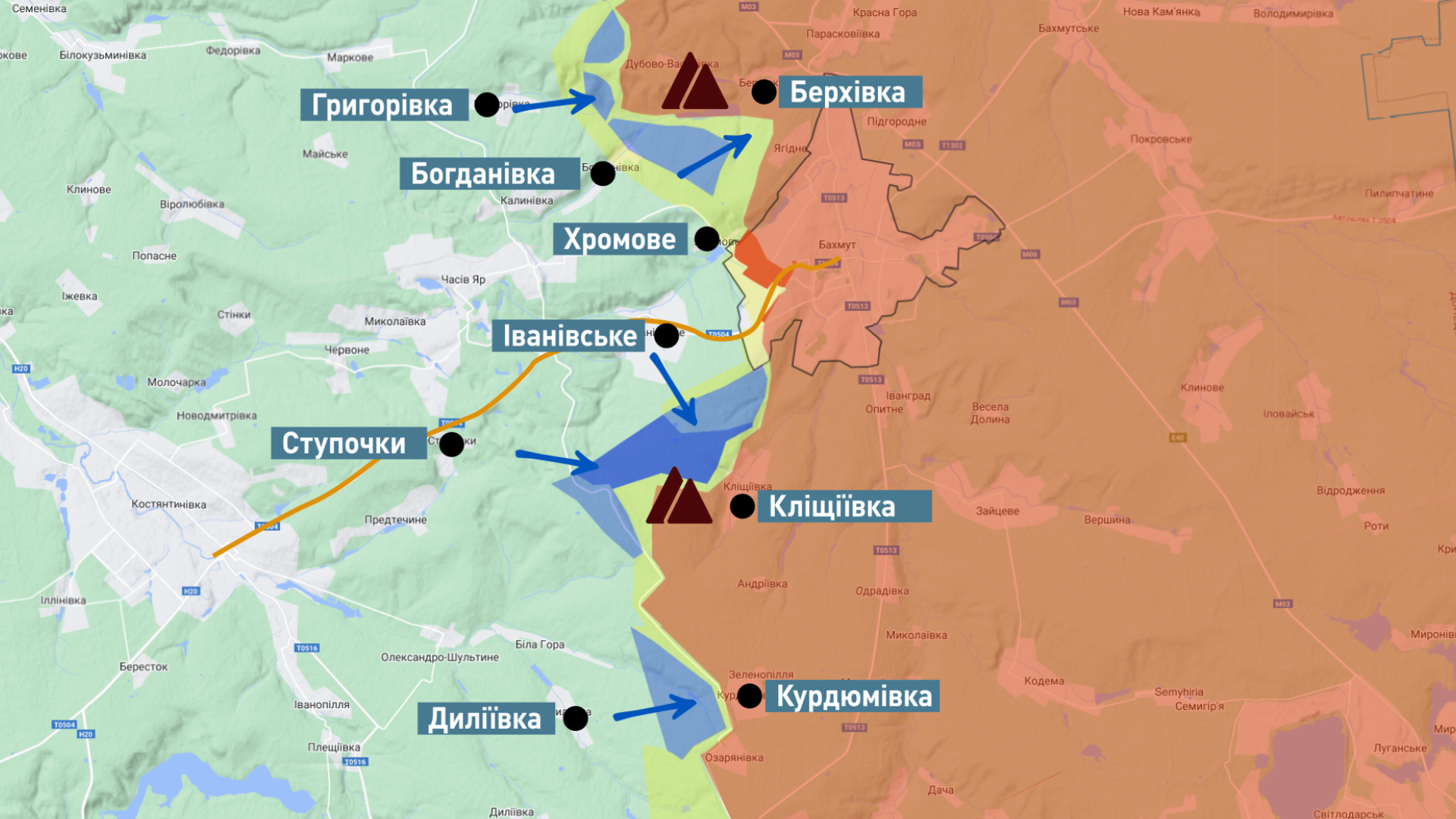
Dynamics of Bakhmut fighting is changing, increase in production of Russian missiles will not affect frontline situation: weekly military summary
Bakhmut keeps fulfilling its mission of grinding the enemy, which prevents them from advancing further. The Ukrainian Armed Forces are pushing Russians back and are succeeding in some areas of the front line where Russian forces tried to cut the supply line and encircle the city
Russian troops are trapped and cannot advance any further
Currently, the lion's share of media outlets says that the Ukrainian military holds 5% of the territory in Bakhmut. Yesterday, Bild published an article saying that it was 1%. That is, these areas have significantly decreased: now the contact line runs along two streets - Yuvileina Street, where there are about 20 high-rise buildings, and Korsunskyi Street, where Russian forces are moving and trying to advance to Tchaikovska Street. In fact, this is a triangle where the main fighting in Bakhmut itself takes place.
If Russia manages to advance through this area, then there will be about 2 km of open space. Under this fire, it is unclear where Russia will move, as everything that could be destroyed behind them has been destroyed. And further is a trap, where they will be under fire from Ukrainian artillery. We understand that even if Russia captures the city of Bakhmut, it will not be a tactical victory but an operational defeat, as it has not achieved any systemic goals. First, it did not open the gates for a further offensive on Sloviansk and Kramatorsk. Secondly, the number of personnel who suffered losses is catastrophic. In particular, Reznikov said that a total of 70,000 Russian soldiers were lost in the Bakhmut area. And every day Russia loses almost 300 people killed and wounded within a battalion. For example on May 19, 360 Russian soldiers were dead and wounded in the Bakhmut area.

Bakhmut continues to fulfill its mission of grinding the enemy. Russian troops are not advancing any further. By destroying all the buildings where Ukrainian defenders were holding the line, they have deprived themselves of the defense line. Ukrainian military, who are on the hills, can now see Bakhmut in the palm of their hands. When Syrsky talks about a trap, this is exactly the manifestation of this trap, where the enemy gets a Pyrrhic victory by reaching the administrative borders of the city.
The Ukrainian military managed to push Russian troops back in some areas of the frontline and advance
At the moment, we can only guess that Ukrainian units are succeeding on the flanks, i.e. on the ticks where Russian troops tried to encircle Bakhmut, cut the supply line and create conditions for the encirclement of Bakhmut. This did not happen, and starting around May 9, the dynamics are completely different. Now the fighting is taking place in the north, where there has been an advance in the area of Vasyukivka.
Thus, in the Berkhivka area, the Ukrainian Defense Forces have secured strikes on Russia’s 4th and 72nd brigades, and now it is slightly higher. The access to heights in the area of this settlement creates preconditions on the northern flank for significant threats to enemy forces. The situation is similar in the south, where it is much more dynamic.

Also in the south, the 3rd Assault Brigade of the Ukrainian Defense Forces pushed Russian forces out of the Siversky Donets Canal, which was held by them. Now all Russian forces are located along the canal. Also yesterday, the brigade reported advances in the western part of Bakhmut in an area 2 km wide and 700 meters deep. Presumably, this area is connected to the area near Klishchiivka.
Now Klishchiivka is located in a lowland, and in front of it are these dominant heights. On the map, we can see that this is where Ukrainian units are advancing. They say that Klishchiivka is completely destroyed, and during the day a group of 20 Russians or Wagner mercenaries arrives and gets destroyed. After a while, another group of the same kind comes up. So in a week or even sooner, we can talk about the capture of Klishchiivka, and most importantly, reaching the dominant heights near it. This also threatens from the southern flank for the Wagner or Russian group, which will be located in the lowlands in the Bakhmut area.

Is this the beginning of a major counteroffensive? Of course not. These are just tactical actions related to the stabilization of the front line and the creation of preconditions for the safe withdrawal of the Ukrainian military, if we really have to withdraw some of them from the areas of Bakhmut in the western part of which Russia is trying to put pressure.
Now Prigozhin is crying out to hold the flanks, to prevent the capture of Sakko i Vantsetti. This settlement is located about 15 km from Bakhmut, near Soledar. Before the census, only three people lived there. Our military, although they have pushed Russians back, have not entered this village yet. So in any case, Prigozhin's hysteria continues. I think that the best outcome of this hysteria will be for the Russian regular army to shoot Wagner fighters. This will be a good ending to the history of the fighting in Bakhmut.
The rate of destruction of Russia’s air defense systems and artillery systems has increased
If you look closely at the graph of Russia’s losses in artillery systems and various air defense systems, you can see that in May there are positive indicators when it comes to artillery systems - 289 for the month is an absolutely good indicator. As for air defense systems, there are different systems, and it is difficult to clearly identify which ones were destroyed. But in any case, we also see that they are being destroyed quite effectively.
Damage to the Patriot air defense system as a result of the May 16 attack was minimal
CNN, citing its sources, said several times that during the extremely effective defense of Kyiv, when the Patriot shot down 6 Kinzhal missiles flying with a minimum interval, it is likely that a fragment of a destroyed Kinzhal hit one of the launchers. We do not know what exactly was damaged. However, given the subsequent statements by the Pentagon spokesperson that Patriot is already in service and performing its tasks, we can say that the damage was minimal and did not affect the combat capability of the system.
The rate of missile production in Russia has increased, but this will not change the situation on the battlefield due to the successful work of Ukrainian air defense
When we talk about the Russian rate of production of attack weapons, this is information from the Main Directorate of Intelligence. In general, we are talking about 65 missiles per month - these are Kh-101 cruise missiles, Kalibr and a cruise missile for Iskander. The production rate of Kinzhals has not changed - two missiles per month. If we compare the figures, we can recognize that due to the accumulation of capabilities compared to 10 months ago, Russia has now increased the production of cruise missiles by about 30%. These results seem to be significant, but we look at the effectiveness of our air defense system: now the downing rate is close to 100% for both Kinzhals and cruise missiles. Our algorithms and our air defense density are such that even these indicators of the increase in the number of missiles produced do not affect the situation on the front line or the resilience of our society.
I hope that this and other measures will slow down the pace of Russian missile production. We remember that Ukraine has already received a new SAMP-T anti-aircraft missile system, manufactured by France and Italy, which can also fight Kinzhals. So I hope that Western partners' assistance in strengthening air defense will continue to be systematic and unchanged.
Supply of F16 fighter jets
We remember Biden's statement about when the F16s would be delivered to Ukraine - whether they would never be delivered or not. Now, at the G7 summit in Japan, Biden said that a decision would be made to train Ukrainian pilots to operate F16s. Without elaborating, he said that we will decide when, how, and in what quantity these aircraft will be supplied to Ukraine. This issue will also be raised at the NATO summit in Vilnius. Now, I think the ice is slowly breaking, and it will be very similar to the situation with Patriot and Abrams.
We will have these aircraft. The total number of aircraft that Ukraine wants to have is about 40-50. These are four squadrons at most, each with 12 aircraft. In fact, there are countries that are already part of this fighter jet coalition. But I think that we need a political push from the United States, in addition to the willingness to start training pilots.
- News











































